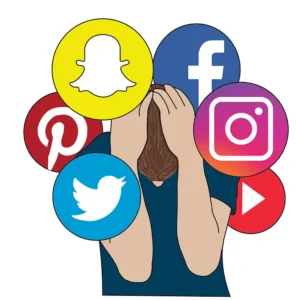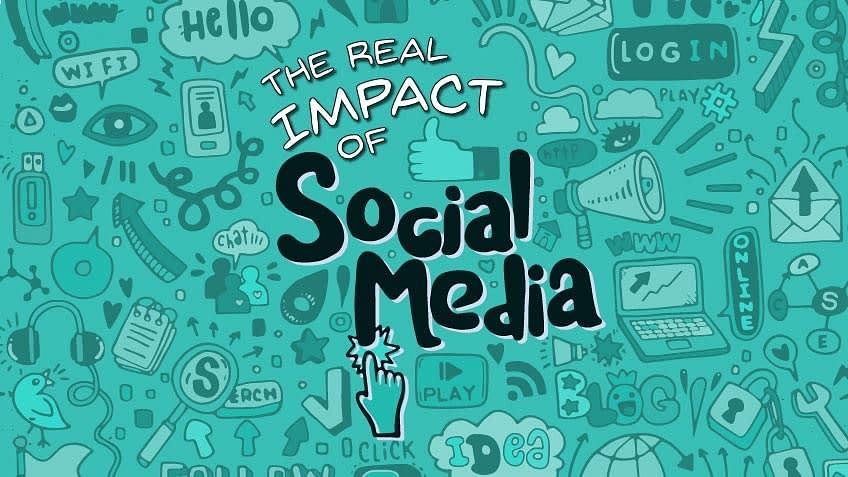Social Media and Kids: Navigating the Balance Between Benefits and Risks
In the heart of a bustling suburban neighborhood lived the Johnson family. Like many modern families, they navigated the delicate balance of work, school, and home life, all while managing the omnipresent influence of technology. At the center of this story is 14-year-old Emily, a bright and creative teenager who, like many of her peers, spent a significant amount of time on social media. This blog explores Emily’s journey with social media, reflecting the broader question parents often ask: Is social media helpful or harmful for kids?
Emily’s Introduction to Social Media
Emily was introduced to social media at the age of 12. It started innocently enough with her friends encouraging her to join platforms like Instagram and TikTok. Her parents, Laura and Michael, were initially hesitant but eventually relented, hoping to teach Emily responsible online behavior. They set up parental controls and had frequent discussions about online safety.
At first, social media seemed like a positive addition to Emily’s life. She connected with friends, shared her artwork, and even joined online communities dedicated to her hobbies. The creative nature of platforms like Instagram allowed her to showcase her photography, gaining appreciation and feedback from a wider audience. For Emily, social media was a source of inspiration and connection.
The Turning Point
However, as time passed, Laura and Michael began to notice changes in Emily’s behavior. She became increasingly withdrawn, spending hours scrolling through her phone. Family dinners were often interrupted by notifications, and Emily’s once-active lifestyle was replaced with a sedentary routine centered around her devices.
The turning point came when Emily’s grades began to slip, and she started experiencing anxiety and sleep disturbances. Laura and Michael decided it was time to delve deeper into the impact social media was having on their daughter.

The Hidden Harms of Social Media Addiction
1. Comparison and Self-Esteem
One evening, Laura found Emily in tears after scrolling through Instagram. When asked what was wrong, Emily revealed that she felt inadequate compared to the seemingly perfect lives of influencers and friends online. This phenomenon, known as social comparison, is a common pitfall of social media. Kids often compare themselves to the curated, idealized versions of others’ lives, leading to feelings of inferiority and low self-esteem.
2. Cyberbullying
Emily also opened up about the negative comments she had received on her posts. Although not frequent, the sting of a mean comment or cyberbullying incident can be profound. The anonymity and distance provided by screens often embolden bullies, making social media a breeding ground for harmful behavior. Emily’s confidence took a hit, and her anxiety worsened with each negative interaction.
3. Addiction and Time Management
Michael noticed that Emily struggled to put her phone down, even during important activities like homework and family time. Social media platforms are designed to be addictive, with endless scrolling, notifications, and algorithms that keep users engaged. For kids like Emily, this often leads to poor time management, distraction, and a decline in academic performance.
Seeking Solutions For Social Media Addiction
Determined to help Emily, Laura and Michael sought the advice of a child psychologist. Dr. Thompson, an expert in adolescent behavior and technology, provided valuable insights into managing social media’s impact. He emphasized the importance of creating a balanced relationship with technology.
1. Setting Boundaries
Dr. Thompson suggested setting clear boundaries for social media use. The Johnsons implemented rules such as no phones during meals, a tech-free hour before bedtime, and designated times for social media use. These boundaries helped Emily regain control over her time and reduce her anxiety.
2. Encouraging Offline Activities
To counterbalance Emily’s screen time, Laura and Michael encouraged her to engage in offline activities she enjoyed. They enrolled her in a local art class, where she could pursue her passion for painting in a supportive, real-world environment. This shift not only improved Emily’s mood but also boosted her self-esteem by providing tangible achievements and social interactions.
3. Open Communication
Maintaining open lines of communication was crucial. Laura and Michael made it a point to discuss Emily’s online experiences regularly. They created a safe space for her to share her feelings and concerns without fear of judgment. This transparency helped Emily feel supported and less isolated in her struggles.
The Benefits of Social Media
While the Johnsons addressed the negative aspects of social media, they also recognized its potential benefits when used responsibly.
1. Educational Resources
Emily discovered that social media could be a valuable educational tool. She followed accounts that shared educational content, from science experiments to historical facts. These resources supplemented her schoolwork and sparked new interests.
2. Supportive Communities
Through social media, Emily found communities of like-minded individuals who shared her interests and experiences. These online groups provided emotional support and a sense of belonging, which was particularly important when she felt misunderstood by her immediate peers.
3. Creativity and Expression
Social media continued to be an outlet for Emily’s creativity. She used platforms like TikTok to create and share short videos, exploring her talents in new and exciting ways. This creative expression was both a hobby and a means of building her confidence.
Finding Balance
The Johnson family’s journey underscores the importance of finding balance. Social media, like any tool, can be both helpful and harmful. For kids like Emily, the key lies in mindful usage, guided by supportive and informed parents.
1. Monitoring and Supervision
Parents should stay involved in their children’s online activities. This doesn’t mean intrusive monitoring but rather understanding what platforms they use, who they interact with, and the type of content they consume. This awareness allows parents to guide their children effectively.
2. Education and Awareness
Educating children about the realities of social media is essential. They need to understand that not everything they see online is real and that the lives portrayed on social media are often edited highlights. This awareness can mitigate the negative effects of social comparison.
3. Promoting Critical Thinking
Encouraging critical thinking helps children navigate the online world more safely. Teach them to question the content they see, recognize the signs of cyberbullying, and understand the importance of digital etiquette. Critical thinking skills empower children to make informed decisions online.
Conclusion: Navigating the Digital Landscape
Emily’s story is a reflection of the broader experiences many families face in today’s digital age. Social media’s impact on kids is multifaceted, with the potential to be both beneficial and detrimental. The Johnsons’ proactive approach to managing Emily’s social media use serves as a valuable example for other parents navigating similar challenges.
By setting boundaries, encouraging offline activities, maintaining open communication, and educating children about responsible social media use, parents can help their kids reap the benefits of digital connectivity while minimizing the risks. Ultimately, it’s about finding a balance that promotes healthy development and well-being.
If you or your child are struggling with the effects of social media, consider seeking professional advice. Therapists and counselors can provide tailored strategies to help manage and mitigate the impact of social media on mental health. Remember, you are not alone in this journey, and with the right support and guidance, navigating the digital landscape can lead to positive outcomes for your child’s growth and happiness.

